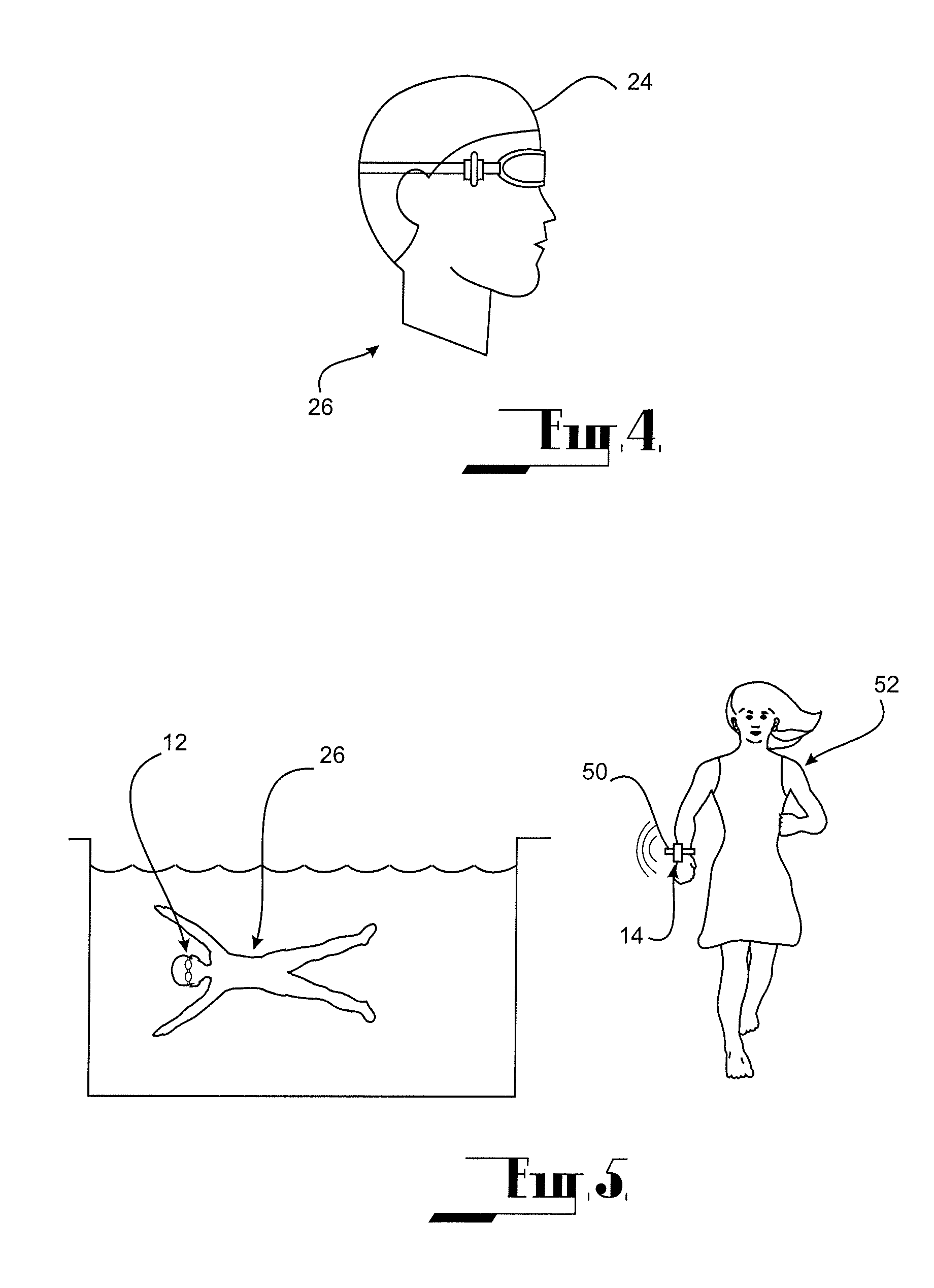Monitoring system and method
a monitoring system and monitoring method technology, applied in the direction of signalling systems, electric signalling details, instruments, etc., can solve the problems of systems and methods, people with little or no swimming ability, young children, and easy drowning,
- Summary
- Abstract
- Description
- Claims
- Application Information
AI Technical Summary
Benefits of technology
Problems solved by technology
Method used
Image
Examples
first embodiment
[0074] In FIG. 1, there is shown a monitoring system 10 in accordance with the present invention.
[0075] In the embodiment, the system 10 is intended to be used by an adult to monitor or supervise a young child having little or no swimming ability when playing in or near water, such as at a beach or a swimming pool.
[0076] The monitoring system and method of the present invention is not limited to such monitoring, however, and in alternative embodiments may be used to monitor any person or animal in a potentially hazardous environment from which they may require rescue or assistance. For example, an elderly or physically / mentally impaired person having a bath, a diver exploring a flooded cave, an emergency worker entering a burning building, or a dog playing in a park, could all be monitored by use of alternative embodiments of the present invention.
[0077] The system 10 comprises a portable, first module in the form of a child unit 12 capable of communicating with a portable, second...
second embodiment
[0155] In the system 10 there is provided a plurality of child units 12, each having a unique identifier. The parent unit memory 42 stores the unique identifier of each of the child units 12 in the plurality of child units 12.
[0156] Each child unit 12 of the plurality of child units 12 can be set with a different predetermined time delay period T or mode, as described previously. The predetermined time T or mode of operation for each child unit 12 is shown on the display 48 of the parent unit 14.
[0157] As in the first embodiment, a ‘sleep-then-wake’ status monitoring method is used. Once the system 10 is activated, each child unit microcontroller 18 generates and sends status information messages at regular one second intervals to the parent unit 14 via the child unit transceiver 32 and the child unit antenna 34. Carrier Sense Multiple Access with Collision Avoidance (“CSMA / CA”) capability of the system 10 ensures that the child units 12 are able to transmit without interfering wit...
PUM
 Login to View More
Login to View More Abstract
Description
Claims
Application Information
 Login to View More
Login to View More - R&D
- Intellectual Property
- Life Sciences
- Materials
- Tech Scout
- Unparalleled Data Quality
- Higher Quality Content
- 60% Fewer Hallucinations
Browse by: Latest US Patents, China's latest patents, Technical Efficacy Thesaurus, Application Domain, Technology Topic, Popular Technical Reports.
© 2025 PatSnap. All rights reserved.Legal|Privacy policy|Modern Slavery Act Transparency Statement|Sitemap|About US| Contact US: help@patsnap.com



